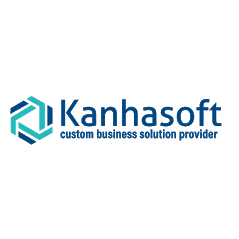


Explore how e-commerce businesses in 2025 utilize web scraping to monitor prices
In 2025, e-commerce businesses have elevated this practice to an art form, leveraging it to stay ahead in the cutthroat online marketplace. But how exactly are they doing it? Let’s dive into the intricacies of web scraping and its transformative role in e-commerce today.
For the uninitiated, web scraping involves extracting data from websites using automated bots. Think of it as mining for gold, but instead of precious metals, you’re unearthing valuable information—prices, product descriptions, customer reviews—that can inform business strategies. It’s like having a backstage pass to the internet’s vast repository of data.
Fast forward to 2025, and the digital realm has exploded with data. According to recent statistics, the volume of web data has grown exponentially, presenting both challenges and opportunities for businesses. E-commerce companies, in particular, are tapping into this data deluge to refine their operations and enhance customer experiences.
Remember the time we launched a new gadget, blissfully unaware that our competitor had slashed their prices overnight? The ensuing sales slump was a lesson in the importance of real-time price monitoring. Today, e-commerce businesses employ sophisticated web scraping tools to track competitors’ pricing strategies, ensuring they remain competitive without sacrificing profit margins.
There’s nothing quite like the frustration of a customer eager to purchase, only to be met with an ‘out of stock’ notice. By scraping data on product availability across various platforms, businesses can anticipate demand fluctuations and adjust their inventory accordingly. It’s akin to having a crystal ball that predicts when the next fidget spinner craze will hit.
In the age of social media, a single negative review can snowball into a PR crisis faster than you can say “hashtag boycott.” Web scraping enables companies to aggregate and analyze customer reviews and social media mentions, providing insights into public sentiment. This proactive approach allows businesses to address issues before they escalate—because nobody wants to be the next viral cautionary tale.
Gone are the days when product development relied solely on intuition and focus groups. By scraping data on emerging trends and consumer preferences, e-commerce companies can innovate in alignment with market demands. It’s like having a direct line to your customers’ desires—minus the need for a psychic medium.
Of course, with great power comes great responsibility. The legal landscape surrounding web scraping is complex, and businesses must navigate it carefully to avoid potential pitfalls. Ensuring compliance with terms of service and data protection regulations is paramount. After all, nobody wants to be the protagonist in a cautionary tale about legal misadventures.
Allow us to regale you with a tale from our own archives. Back, we noticed a sudden dip in sales of our flagship product. After some digital sleuthing (read: frantic web scraping), we discovered a competitor had undercut our prices by a significant margin. Armed with this intel, we adjusted our pricing strategy in real-time, averting a potential revenue disaster. It was a stark reminder of the power of data—and the perils of complacency.
Looking ahead, the role of web scraping in e-commerce is poised to expand even further. With advancements in artificial intelligence and machine learning, scraping tools are becoming more sophisticated, enabling deeper insights and more nuanced data analysis. Businesses that harness these tools effectively will be well-positioned to thrive in the ever-evolving digital marketplace.
